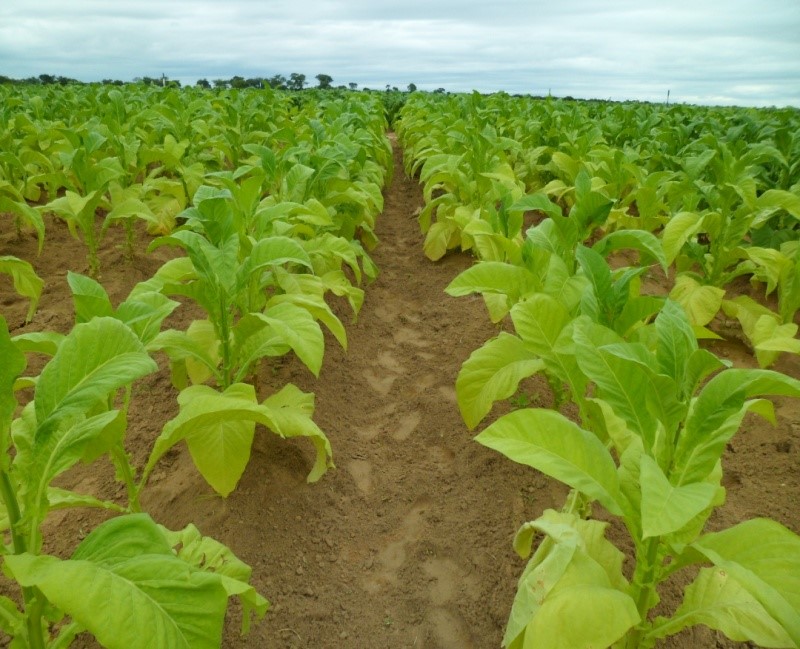“Enabling your choice of variety to attain its yield potential”
By Fungai Zinyandu
Crop Production and Molecular Technologies Division
Tobacco Research Board
The currently registered Kutsaga tobacco varieties have a yield potential ranging from three and a half to five (3½-5) tonnes per hectare. However, the national average yield remains just below two tonnes per hectare. Optimal tobacco production to enable the attainment of the variety’s yield potential, is dependent on best management practices including timeous and effective weed control.
When not properly managed weeds, can drastically reduce yields as they are good nutrient absorbing competitor plants. Weeds have a higher nutrient uptake capacity than cultivated crops which often results in prolific growth within a short period of time. Weeds also thrive under adverse conditions due to their large vigorously growing shoots and root systems. They tend to interfere with crop harvesting and of real concern is that they harbour pests and pathogens that adversely affect tobacco leaf quality.
In tobacco production it is, therefore, extremely important to manage weeds in order to maximize crop yield and quality and ensure profitably. Mechanical or chemical means can be used to control weeds. However, growers are encouraged to use a combination of the two in an effort to reduce sole dependency on chemical control and enable sustainable tobacco production.
Management of weeds
1. Mechanical Control
Mechanical control methods include ploughing, disking, hand-hoeing and cultivating. Hand- hoeing is the most common method used, where weeds are removed using a hoe, in the rows (intra-row) and between rows (intra-row). The weeds are exposed to the sun to desiccate and die.
2. Chemical Control
The choice of herbicide depends on the weed spectrum in the land. It must be appreciated that individual herbicides are selective and will not control all weeds. The table below lists some of the herbicides registered for use on tobacco and the weed spectrum they control.
Herbicides recommended for use on Tobacco
| Herbicide | Targeted weeds | At planting |
| Pre-emergence herbicides | ||
| S-metolachlor | Annual grasses, nutsedge and some broadleaved weeds | Apply 1.9 – 2.3 L/ha in 200 L water within 4 days of transplanting |
| Sulfentrazone | Yellow and purple nutsedge and some broadleaved weeds | Apply 475 ml /ha in 200 L water within 4 days of transplanting |
| Clomazone | Grass weeds and some broadleaved weeds. | Apply 1.5 L/ha in 200L water within 4 days of transplanting. |
| Dimethanamid-p | Annual grasses, some broadleaved weeds and yellow nutsedge | Apply 0.7-1.0L/ha. Spray within 4 days. Use higher rate for nutsedge control. |
| Post-emergence herbicides | ||
| Halosulfuron | Nutsedge and some broadleaved weeds | Apply 50 g in 200 L of water and use herbicide shields |
| Bentazon | Nutsedge and broadleaved weeds | Apply 3 L in 200 L of water and use herbicide shields |
| Fluazifop-p-butyl | Annual and perennial grasses | Apply 3 L in 200 L of water and use herbicide shields |
| Propaquizafop | Annual grasses, nutsedge and some broadleaved weeds | Apply 1.0-2.0 L/ha. Dose rate depends on the growth stage and species of grasses |
| Clethodim | Annual and perennial grasses. | Apply 0.75- 1.0L/ha. |
Ideally, pre-emergent herbicide application should be done within four days of transplanting the tobacco crop on a weed-free soil with good tilth. On the other hand, post-emergent herbicides are applied at weed seedling stage. When applying post-emergence herbicides, good coverage of the entire weed is necessary to achieve maximum weed control and it is recommended to spray herbicides using a flat fan or a flood jet nozzle. When spraying, the nozzle should be directed over the inter-row spacing so as to cover the top of the ridge and base of the plants on either side (Fig 2). This is done to reduce herbicide contact with the growing point of the new tobacco transplants.
It is possible to mix different weed spectrum herbicides to maximize weed control. For example, the pre-emergence herbicide, Sulfentrazone, can be combined with S-Metolachlor or Clomazone. Studies carried out at TRB showed that these mixtures are compatible and are not phytotoxic to tobacco plants when used at the recommended rates. Growers should ensure that all recommended safety precautions are followed especially during herbicide applications. Additionally, special care must be taken to adhere to the herbicide label recommended rates to prevent phytotoxicity and loss of plants.
Timeous and effective weed control is one step closer to enabling the selected variety to attain its potential yield.
For more information, contact Kutsaga Research Station’s Crop Production and Molecular Technologies Division on telephone 0868 800 2604 or Email: tobres@kutsaga.co.zw
